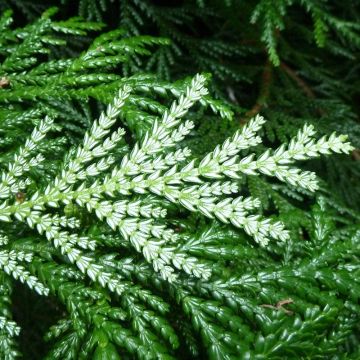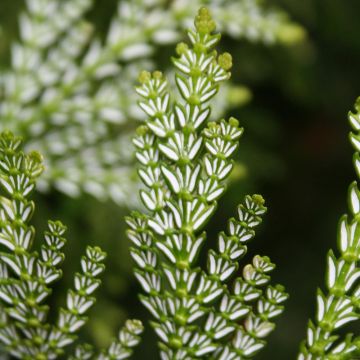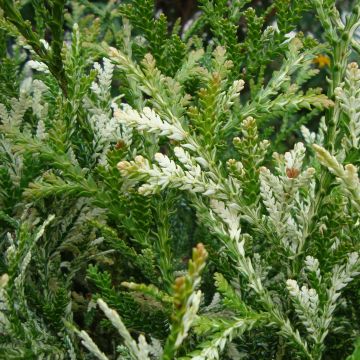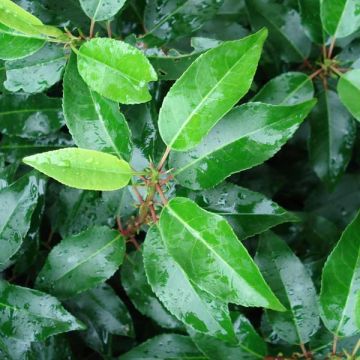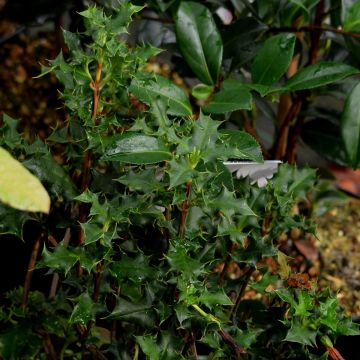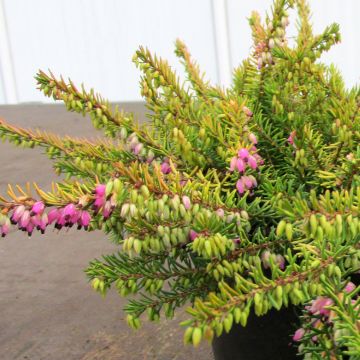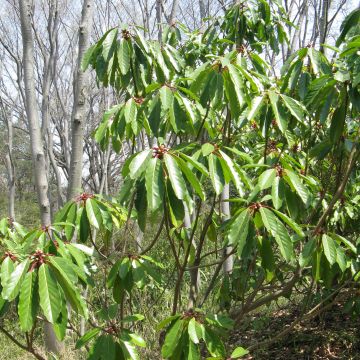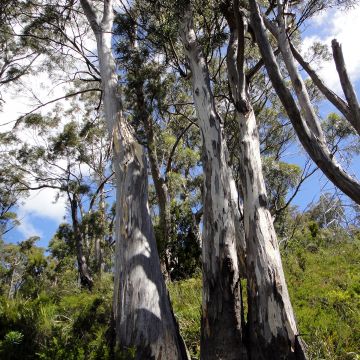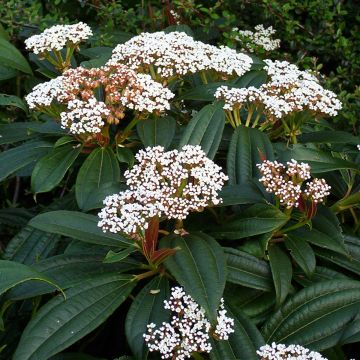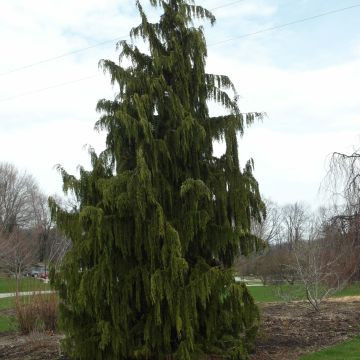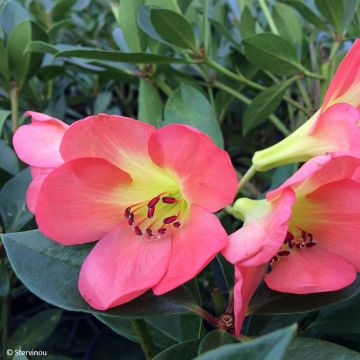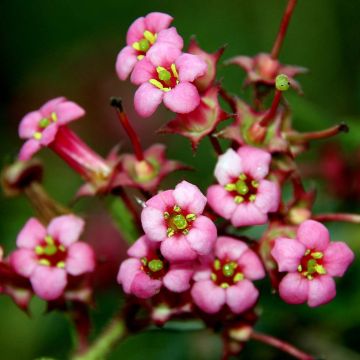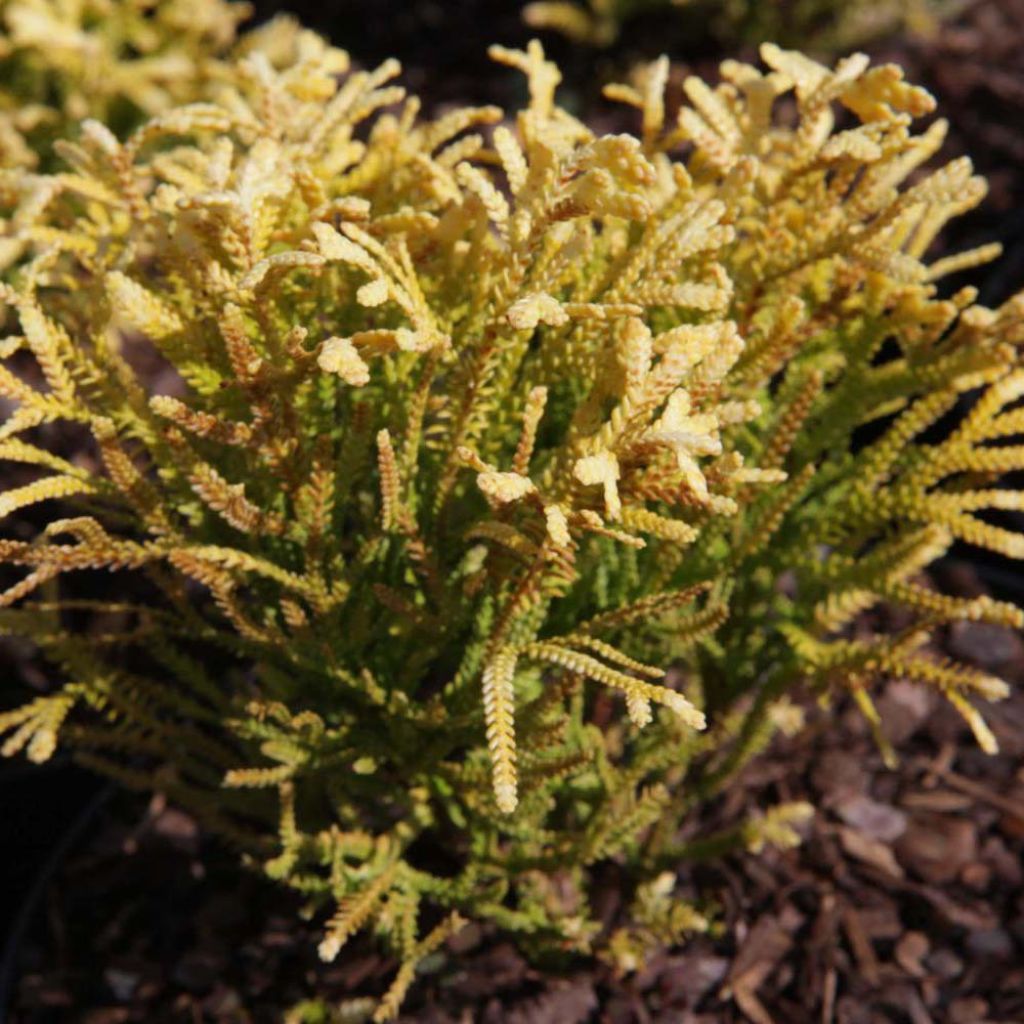

Thuya du Japon - Thujopsis dolobrata SOLAR FLARE®
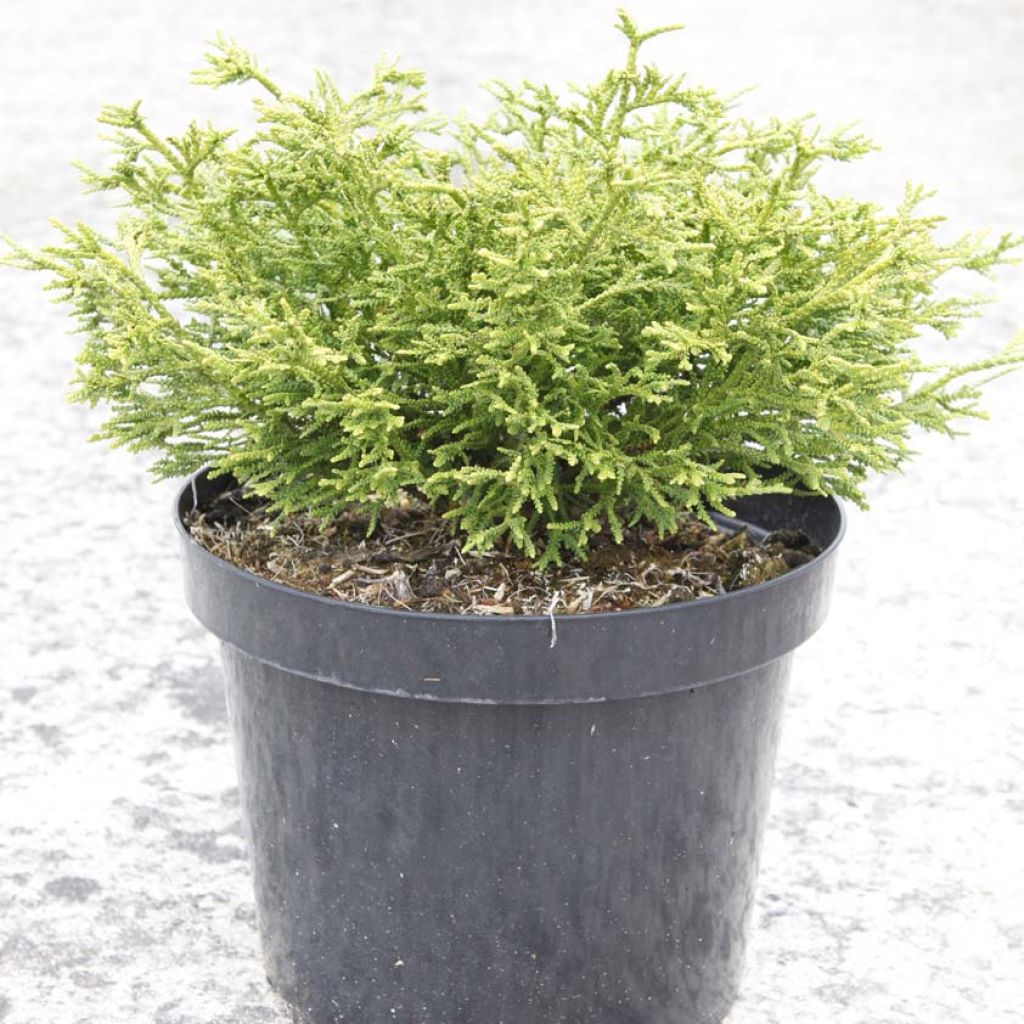

Thuya du Japon - Thujopsis dolobrata SOLAR FLARE®
Thujopsis dolobrata Solar Flare - Hiba
Thujopsis dolabrata Solar Flare®
Hiba, Hiba Arborvitae, False Arborvitae
Why not try an alternative variety in stock?
View all →This plant carries a 24 months recovery warranty
More information
We guarantee the quality of our plants for a full growing cycle, and will replace at our expense any plant that fails to recover under normal climatic and planting conditions.
From 7,90 € for pickup delivery and 6,90 € for home delivery
Express home delivery from 8,90 €.
Would this plant suit my garden?
Set up your Plantfit profile →
Description
The Thujopsis dolobrata 'Solar Flare' is a brand new miniature form of a large Japanese conifer called Hiba or asunaro. Similar to the Thuja, it forms, over time, a spreading cushion that will not exceed half a metre in all directions. This peculiar conifer develops branchlets covered with flattened scales that somewhat resemble the fronds of certain ferns. The uniqueness of this variety lies in the coloration of its foliage, which takes on different shades of yellow as it ages, ranging from pure gold to a very soft yellow. It has a very slow growth rate and extremely reduced size, making it ideal for moist rockeries, beautiful pots on terraces, or near water features in humus-rich soil.
The Thujopsis dolobrata is the only representative of its genus related to thuja and belonging to the cypress family. It is a large evergreen conifer native to the humid forests of central and southern Japan. In its natural habitat, this tree can reach heights of up to 40 metres (131 feet) with a spread of 10 metres (33 feet), and it is covered in reddish-brown bark that peels off in vertical strips. It has a pyramidal and dense habit, with multiple tops and flat branches that droop to the ground. It is a very hardy species, well adapted to cool temperate climates and moist, non-calcareous soils. Its wood is durable and pleasantly fragrant, similar to that of Thuja plicata. In Thujopsis, the cones are ovoid and small (15 mm (<1in) long by 10 mm (<1in) in diameter), covered with 6 to 12 scales that are themselves covered in a violet-white wax when young. This conifer has given rise to a few cultivars that have been selected for their reduced growth and ornamental qualities.
The recently introduced cultivar 'Solar Flare' stands out for its extremely reduced size, its cushion-like habit, and its remarkable foliage, with changing colours. Its growth rate is very slow, so it will reach a height of 30 cm (12in) and a spread of 50 cm (20in) at the age of 30. When crushed, this conifer releases an aromatic fragrance and its flattened branches, seemingly braided, are covered in fleshy scale-like leaves that measure 3 mm (1in) in length. The diamond-shaped leaves interlock, giving the branches a flat appearance, but thicker than that of the thuja. The foliage starts off as a tender green and gradually changes to various shades of yellow, from light yellow to the brightest yellow.
The 'Solar Flare' Japanese thuja is a plant that thrives in moist, non-calcareous soil. It naturally fits into small gardens, moist rockeries, or planted as a waterside border. It can also be planted in a beautiful container on a terrace or balcony, as long as it is regularly watered with non-calcareous water. It pairs well with large stones bordering a small waterfall, ferns, astilbes, primroses, Farfugium, and other plants that prefer moist but sunny locations.
The true graphic qualities of conifers naturally come to the fore in the design of a contemporary garden that values the aesthetics of shapes, silhouettes, and textures over the fleeting beauty of flowers. These plants, with their reassuring permanence, create lasting structure in borders, mark pathways, and border terraces, easily replacing the strong presence of trimmed boxwood or holly. The key is to play with volumes and colors.
Report an error about the product description
Thujopsis dolobrata Solar Flare - Hiba in pictures
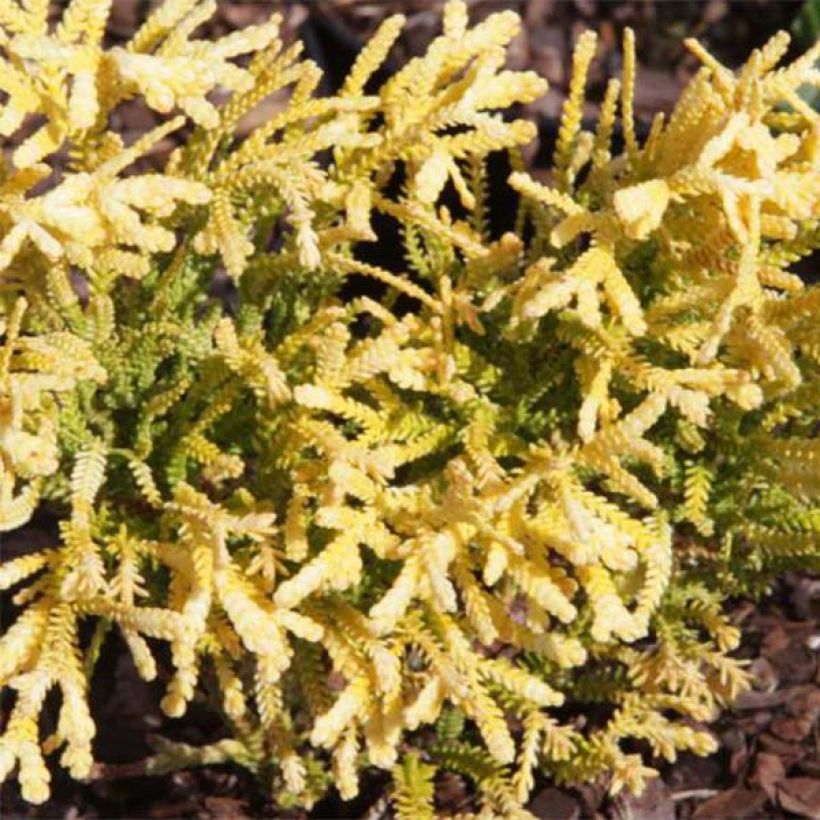

Plant habit
Foliage
Botanical data
Thujopsis
dolabrata
Solar Flare®
Cupressaceae
Hiba, Hiba Arborvitae, False Arborvitae
Cultivar or hybrid
Other Thujopsis - Hiba
Planting and care
The Thujopsis dolobrata 'Solar Flare' should be planted from September to November and from February to June in deep, humus-rich, slightly acidic or neutral soil that must remain consistently moist throughout the year. It fears extremely hot temperatures and cannot tolerate any drought. However, it requires a sunny or partially shaded exposure to thrive. Soak the root balls thoroughly before planting. Optionally, add organic amendments to the soil during planting and water generously with non-limey water in the first few years, especially during dry spells. In very poor soil, you can apply a special conifer fertilizer every April and cultivate the soil in summer. This hardy conifer (up to -25°C (1°F) at least) does not require pruning.
Planting period
Intended location
Care
This item has not been reviewed yet - be the first to leave a review about it.
Evergreen shrubs
Haven't found what you were looking for?
Hardiness is the lowest winter temperature a plant can endure without suffering serious damage or even dying. However, hardiness is affected by location (a sheltered area, such as a patio), protection (winter cover) and soil type (hardiness is improved by well-drained soil).

Photo Sharing Terms & Conditions
In order to encourage gardeners to interact and share their experiences, Promesse de fleurs offers various media enabling content to be uploaded onto its Site - in particular via the ‘Photo sharing’ module.
The User agrees to refrain from:
- Posting any content that is illegal, prejudicial, insulting, racist, inciteful to hatred, revisionist, contrary to public decency, that infringes on privacy or on the privacy rights of third parties, in particular the publicity rights of persons and goods, intellectual property rights, or the right to privacy.
- Submitting content on behalf of a third party;
- Impersonate the identity of a third party and/or publish any personal information about a third party;
In general, the User undertakes to refrain from any unethical behaviour.
All Content (in particular text, comments, files, images, photos, videos, creative works, etc.), which may be subject to property or intellectual property rights, image or other private rights, shall remain the property of the User, subject to the limited rights granted by the terms of the licence granted by Promesse de fleurs as stated below. Users are at liberty to publish or not to publish such Content on the Site, notably via the ‘Photo Sharing’ facility, and accept that this Content shall be made public and freely accessible, notably on the Internet.
Users further acknowledge, undertake to have ,and guarantee that they hold all necessary rights and permissions to publish such material on the Site, in particular with regard to the legislation in force pertaining to any privacy, property, intellectual property, image, or contractual rights, or rights of any other nature. By publishing such Content on the Site, Users acknowledge accepting full liability as publishers of the Content within the meaning of the law, and grant Promesse de fleurs, free of charge, an inclusive, worldwide licence for the said Content for the entire duration of its publication, including all reproduction, representation, up/downloading, displaying, performing, transmission, and storage rights.
Users also grant permission for their name to be linked to the Content and accept that this link may not always be made available.
By engaging in posting material, Users consent to their Content becoming automatically accessible on the Internet, in particular on other sites and/or blogs and/or web pages of the Promesse de fleurs site, including in particular social pages and the Promesse de fleurs catalogue.
Users may secure the removal of entrusted content free of charge by issuing a simple request via our contact form.
The flowering period indicated on our website applies to countries and regions located in USDA zone 8 (France, the United Kingdom, Ireland, the Netherlands, etc.)
It will vary according to where you live:
- In zones 9 to 10 (Italy, Spain, Greece, etc.), flowering will occur about 2 to 4 weeks earlier.
- In zones 6 to 7 (Germany, Poland, Slovenia, and lower mountainous regions), flowering will be delayed by 2 to 3 weeks.
- In zone 5 (Central Europe, Scandinavia), blooming will be delayed by 3 to 5 weeks.
In temperate climates, pruning of spring-flowering shrubs (forsythia, spireas, etc.) should be done just after flowering.
Pruning of summer-flowering shrubs (Indian Lilac, Perovskia, etc.) can be done in winter or spring.
In cold regions as well as with frost-sensitive plants, avoid pruning too early when severe frosts may still occur.
The planting period indicated on our website applies to countries and regions located in USDA zone 8 (France, United Kingdom, Ireland, Netherlands).
It will vary according to where you live:
- In Mediterranean zones (Marseille, Madrid, Milan, etc.), autumn and winter are the best planting periods.
- In continental zones (Strasbourg, Munich, Vienna, etc.), delay planting by 2 to 3 weeks in spring and bring it forward by 2 to 4 weeks in autumn.
- In mountainous regions (the Alps, Pyrenees, Carpathians, etc.), it is best to plant in late spring (May-June) or late summer (August-September).
The harvesting period indicated on our website applies to countries and regions in USDA zone 8 (France, England, Ireland, the Netherlands).
In colder areas (Scandinavia, Poland, Austria...) fruit and vegetable harvests are likely to be delayed by 3-4 weeks.
In warmer areas (Italy, Spain, Greece, etc.), harvesting will probably take place earlier, depending on weather conditions.
The sowing periods indicated on our website apply to countries and regions within USDA Zone 8 (France, UK, Ireland, Netherlands).
In colder areas (Scandinavia, Poland, Austria...), delay any outdoor sowing by 3-4 weeks, or sow under glass.
In warmer climes (Italy, Spain, Greece, etc.), bring outdoor sowing forward by a few weeks.

































